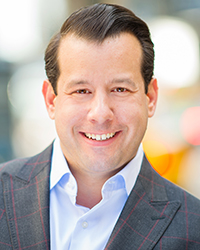News:
Brokerage
Posted: February 20, 2009
Examining the functionality of existing real estate product
The global financial crisis has brought a dynamic factor to our attention. The majority of existing real estate product in the world today is functionally obsolete for today's market. It is neither "green" nor "sustainable," it is not "carbon neutral" or "carbon advantaged." It does not contribute to the long term economic viability of our rapidly urbanizing metropolitan conglomerates. The options for carbon credits and offsets for the errors of our past cannot be easily healed. We might consider our existing marketplace to be a global brownfield in need of remediation.
I believe we are in for a major overhaul that will require investor innovation and major tax incentives similar to rehabilitation tax credits or historic preservation incentives. We might name these restoration real estate tax credits.
In a restoration economy the base value of real estate will be the future value less the cost to retrofit to LEED EB (Existing Building) Certified status and the soft cost of the holding time and interest as well as profit for the risk of the investors. We could equate this to the rebuilding of countries after a civil strife or war. As we look at emerging nations we see them engaging in developmental enhancements that may or may not be green. We must lead the world in restorative ecology and preservation of the earth for local benefits to each culture.
The "Local Food Movement" and other activities of aesthetic living that are emerging from our international follies require us to identify safe and profitable projects that can operate in a carbon advantaged mode. Real estate must be looked at as a "power generating structure" that is contributing to the owner's cash flow. We are looking at the restructuring of our business with the same wide sweeping changes being addressed by the financial and automotive markets. This emerging structure will offer advantages for the truly visionary innovators that see the potential of operating cost control. I believe we will be embracing more technology into the new models that will have us in "Google mode" at the doorstep. The smart green building will also create more transparency, and intranet management and security that can be monitored from a computer wherever the owner is domiciled.
I had the opportunity to attend the UN Climate Change Conference in Poznan, Poland early in December 2008 as an accredited delegate and visit the Technology Exhibit Hall full of innovative products and featuring carbon neutral cities that presently exist in the Middle East and China. I have not heard of a carbon neutral city in the U.S. We must get on the innovation bandwagon and look at the planned community models The Rouse Co. created in the 1970s and the textile industry created in the 1890s creating mill villages on rivers that generated green power and springs with clean water. The U.S. must look beyond the model that is before us today because this model is not the model of the future. We must embrace "restoration ecology" and develop projects that would be suitable for value funds to restore the image of real estate as an investment in the global marketplace.
Elizabeth Belenchia MRICS is the president of Carroll Properties Corp., Spartanburg, S.C.
Tags:
Brokerage
MORE FROM Brokerage
AmTrustRE completes $211m acquisition of 250 Madison Ave.
Manhattan, NY AmTrustRE has completed the $211 million acquisition of 260 Madison Ave., a 22-story, 570,000 s/f office building. AmTrustRE was self-represented in the purchase. Darcy Stacom and William Herring

Quick Hits
Columns and Thought Leadership

Strategic pause - by Shallini Mehra and Chirag Doshi
Many investors are in a period of strategic pause as New York City’s mayoral race approaches. A major inflection point came with the Democratic primary victory of Zohran Mamdani, a staunch tenant advocate, with a progressive housing platform which supports rent freezes for rent

Behind the post: Why reels, stories, and shorts work for CRE (and how to use them) - by Kimberly Zar Bloorian
Let’s be real: if you’re still only posting photos of properties, you’re missing out. Reels, Stories, and Shorts are where attention lives, and in commercial real estate, attention is currency.

Lower interest rates and more loan restructuring can help negate any negative trending of NOI on some CRE projects - by Michael Zysman
Lower interest rates and an increased number of loan restructurings will be well received by the commercial real estate industry. Over the past 12 months there has been a negative trend for NOI for many properties across the country.

Lasting effects of eminent domain on commercial development - by Sebastian Jablonski
The state has the authority to seize all or part of privately owned commercial real estate for public use by the power of eminent domain. Although the state is constitutionally required to provide just compensation to the property owner, it frequently fails to account








.jpg)
.gif)
.gif)